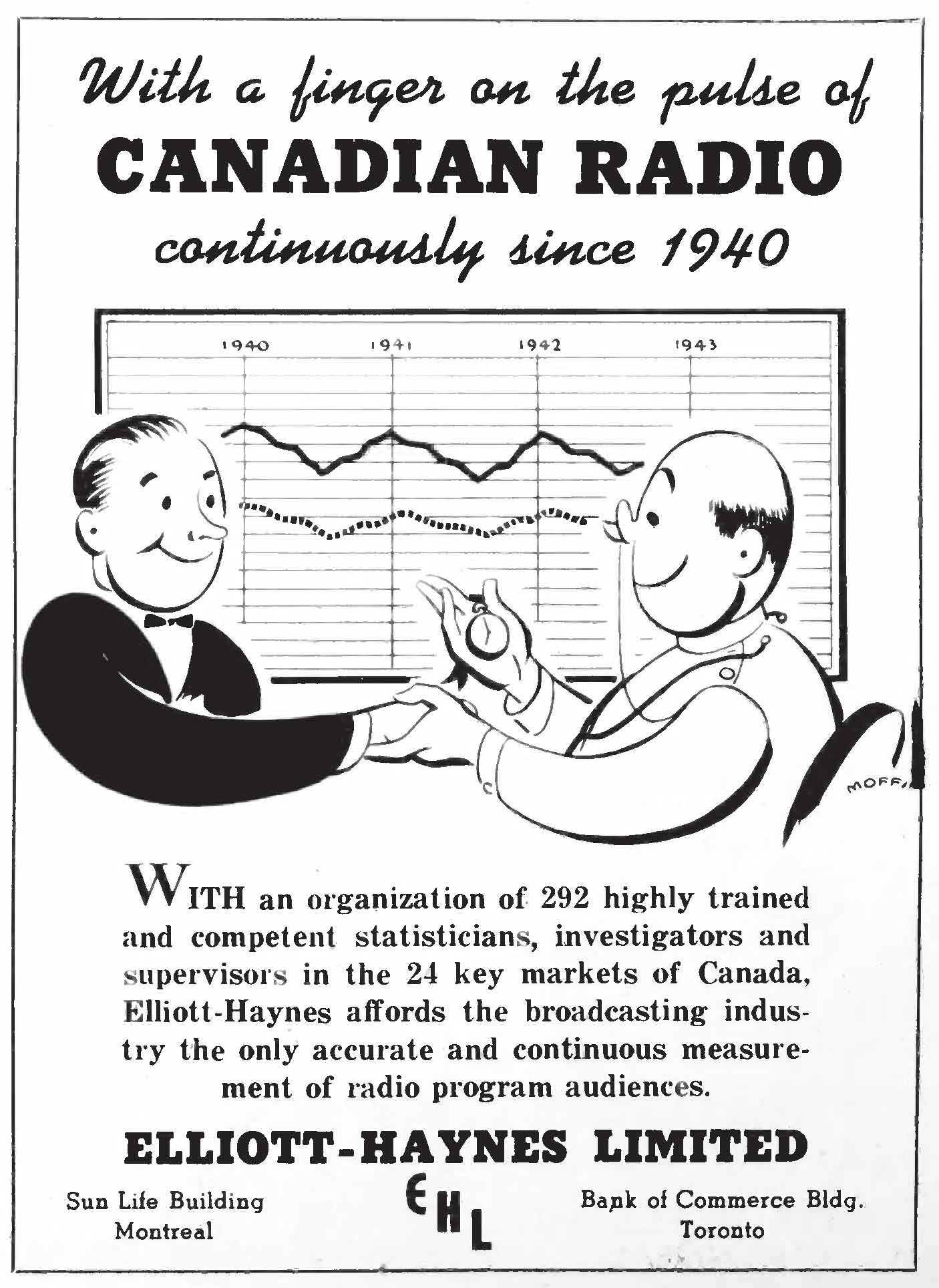
Written by guest blogger Christopher Adams.
Ten years ago, I was asked to write a chapter titled “Public Opinion Polling in Canada” for Mediating Canadian Politics, a collection of essays co-edited by professors Shannon Sampert and Linda Trimble. The focus of the piece was on polling during Canadian election campaigns. The chapter commenced with a description of how the American pollster, George Gallup, opened up shop in Toronto in 1941. The discussion then proceeded to how polls have evolved as an important tool for understanding what Canadian are thinking, and are now heavily used by the media and party strategists.
Without being aware of this, I had set out on a much larger project: to write a history of public opinion research in Canada. The recently published article for the Journal of Canadian Studies, titled “Canada’s Early Developments in the Public Opinion Research Industry,” is part of this. Here I write about what could be described as the “pre-Gallup” days, about how the government, media, advertising agencies, and research firms became increasingly involved in using surveys to study Canadian attitudes, preferences, and behaviours in the early decades of the past century.
Canadians were surveyed in many ways during the past century. This included face-to-face interviews, telephone interviews, and online surveys. There were also many ways by which completed questionnaires were processed, including the use of electronic tabulating machines and computer keypunching. Moreover, survey results were put to various uses, including providing media content, assessing the public’s mood on political issues, and developing brand strategies.
It is no secret that the research industry is undergoing transformational change. Before jumping into my current career as a senior administrator for a university college, I worked in the industry for close to 20 years. Up until the late 1990s, the standard approach to gauging the public’s mood was by doing a telephone survey. This would involve designing a questionnaire, and then relying on live interviewers to call randomly selected households during a series of evenings.
Things have changed, as made evident by how election polls are now done. Just recently, I have been working on a conference paper for the upcoming annual meeting of the Canadian Political Science Association (to be held in Vancouver in early June). As I write in this paper, many Canadians have become difficult to reach due to their increased reliance on mobile devices in place of landline telephones. The Canadian Radio-television and Telecommunications Commission (CRTC) reports that from 2012 to 2016, landline telephone subscriptions in Canadian households declined from 83.8 percent to 66.8 percent, while subscriptions to mobile devices such as cellular telephones, increased from 81.3 percent to 87.9 percent of Canadian households (CRTC, 2018). To address this phenomenon, polling firms now obtain sample containing both mobile phones and landline phones. One CEO of a polling firm informed me that his firm seeks to have close to 50% of their sample containing mobile phone numbers while another firm has pre-established quotas for their studies that a minimum of 20 percent of their completed surveys are done through a mobile device.
To show how things have changed over the past 100 years, for my conference paper I have now reviewed a total of 43 polls that were released to the public in the final five days of all federal and provincial elections held from the beginning of 2015 to the end of 2018. Only one of these polls was based wholly on live telephone interviews, while five included both live telephone interviews and online surveys. All of the other 37 polls were based on either online surveys or Interactive Voice Response (IVR) surveys (IVR surveys involve automated calling and interviews by which respondents use their telephone keys pads to respond to questions).
Research industry practices have come a long way over the past century, and the use of paper and pen surveys and telephone surveys using live interviewers now seem antiquated. Nevertheless, at the core of the industry there has been, and always will be, a need to ensure that survey questions are properly designed, and that samples are representative of the population under study. It is in the early era, i.e. the early 1900s and up to the early 1940s, as my piece for the Journal of Canadian Studies shows, that the survey research industry and its practitioners were developing the tools of their craft.
Christopher Adams holds a PhD in Political Science from Carleton University, and worked in the market research industry from 1995 to 2012. Since 2012, he has served as the chair of the Arthur V. Mauro Centre for Peace and Justice and is rector of St. Paul’s College at the University of Manitoba. In 2018, he co-authored the MRIA-sponsored review regarding polling errors during the 2017 Calgary election (https://www.cbc.ca/news/canada/calgary/calgary-municipal-election-poll-mria-report-release-1.4776633). Dr. Adams is a writer and frequent commentator on issues relating to Canadian politics and polling and is currently writing a history of the polling industry in Canada.
His latest Journal of Canadian Studies article, “Canada’s Early Developments in the Public Opinion Research Industry” is temporarily free to read on UTP Journals Online.
Comments on this entry are closed.